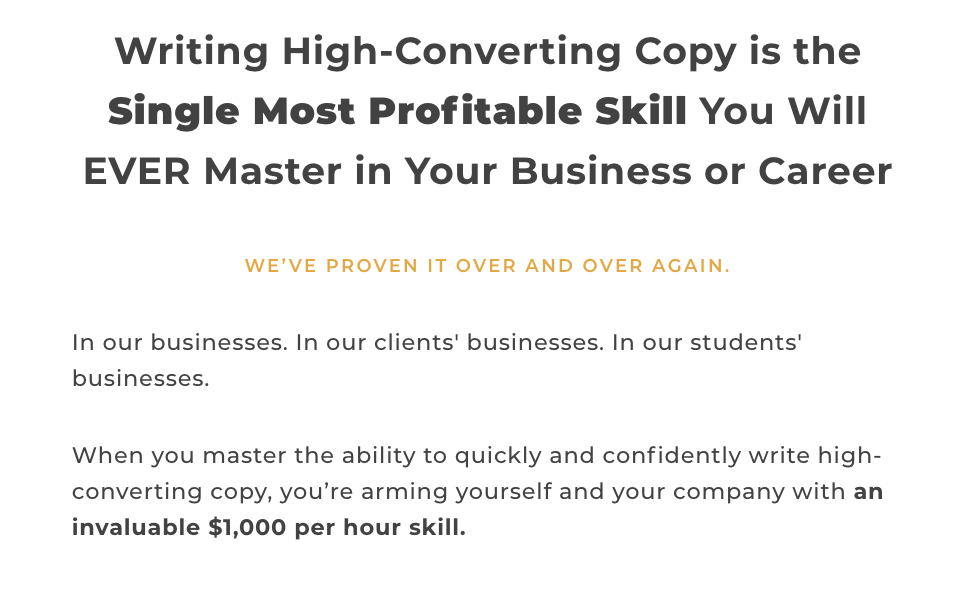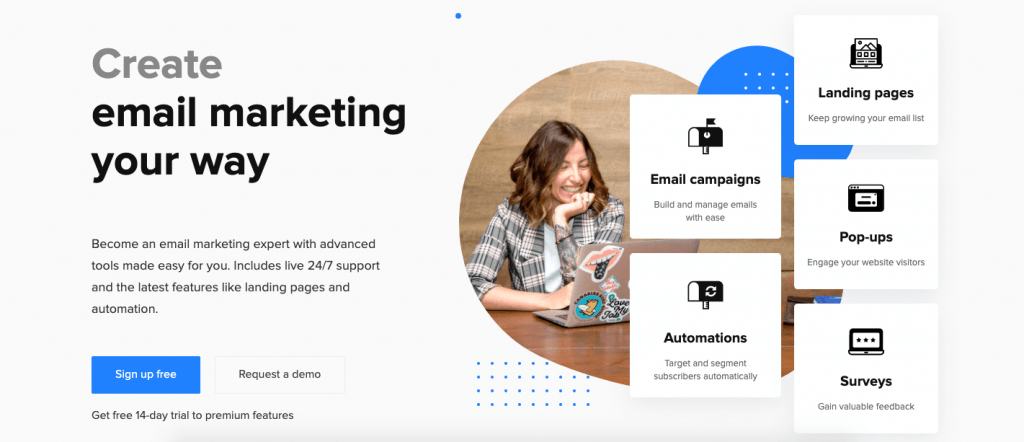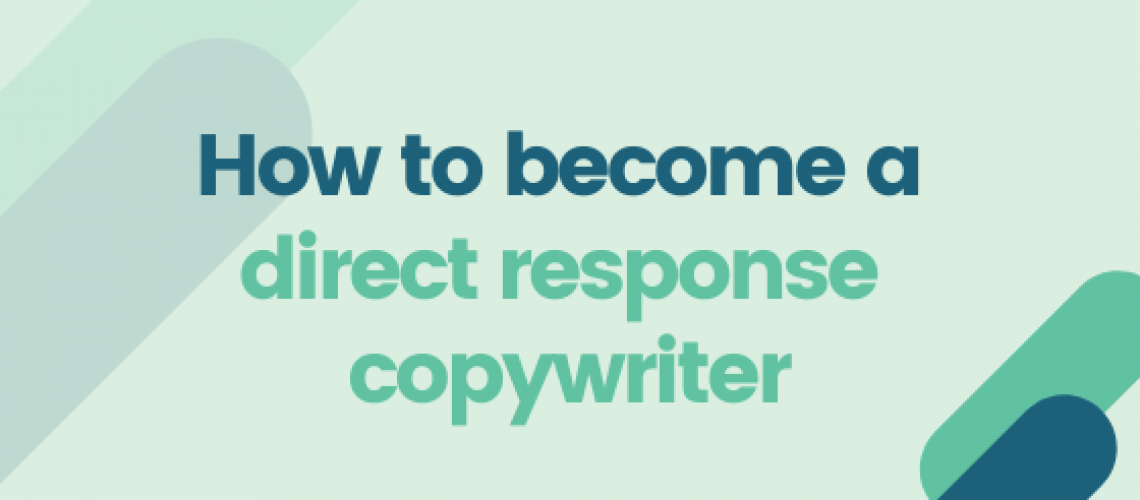How to become a successful direct response copywriter
David Ogilvy is often referred to as ‘the founder of advertising.’ He was one of the first – and most famous – direct response copywriters. Like a woodpecker searching for bugs, he knew how to tap into a customer’s wants and needs, and used this knowledge to create some of the world’s most well-known campaigns.
His campaigns were so effective that they’re still discussed and picked apart in marketing courses and business schools all over the world. One of his most famous pieces of copy is from an ad for Rolls-Royce, which read: ‘At 60 miles an hour the loudest noise in the new Rolls-Royce comes from the electric clock.’ Wow.
At a time when cars were noisy, this was a game-changer and Ogilvy knew it. The ad campaign tapped into what Rolls-Royce’s target audience wanted, a luxury car without the loud noises that were usually heard when driving. And it did it all in one sentence.
What is direct response copywriting?
Direct response copywriting is any form of writing designed to encourage action in the reader. It should provoke an immediate response in them. It can come in the form of landing pages, fliers, emails, sales pages, advertorials, product descriptions, and PPC ads.
One of the key elements of direct response copywriting is talking directly to the reader. This fosters emotional connection, making them feel like you’re there to help them solve their problem, which drives them to take action.
What makes a successful direct response copywriter?
Someone who works as a direct response copywriter is able to tap into an audience’s wants and needs, seemingly at will. Although they make it look easy, they use a rigorous research process to gain a deep understanding of the buyer persona they’re writing for. Some of the ways they can gather this knowledge includes using surveys, questionnaires, social listening, reading product reviews, studying competitor reviews, and reading through online forums. They then translate this knowledge into campaigns that drive sales for the business they’re working with.
Direct response copywriters are responsible for the sales generated by their copy, which means they need to work closely with team members in different disciplines across the whole company. Not only do they gain a more thorough understanding of how things work, but they also see how the team(s) building products talk about them, and how that language can be translated into customer-speak.
In-house direct response copywriters are usually a part of the marketing team, but some argue that they should be a part of sales or even product development, as it’s their job to drive sales and always know what customers want the most. Regardless of where they sit in the company, their role is the same: create copy that can act as a 24/7 sales person.
As with many successful copywriters, the best direct response copywriters are often freelancers, as they can command higher rates for their expertise than working in-house.
How to become an effective direct response copywriter
1. Research, research, research
Research is 90% of a well-constructed writing process. Without it, you risk creating copy that doesn’t appeal to the benefits that prospects are looking for, meaning your copy will struggle to convert. Bad news, considering that’s what you’re being paid for.
Many clients will have completed research in the past that may be useful. Ask your clients for anything they’ve learned about their customers – survey answers, interviews, even access to their analytics can be useful.
If this isn’t possible, conduct your own customer surveys. Find out their pain points, why they bought the product, what else they’d tried before they bought the product.
Even if your product or service is a nice-to-have rather than a need-to-have, tapping into what your audience really wants or needs can be exactly how you convince them they need that product in their life.
As copywriters, we don’t just do this to find out what customers like and dislike, we also need to understand what words and phrases they use to talk about those things. Why do we need to know these things? Well, if you can understand why people need your product AND you can speak to them in their own language, you’ll be able to sell effectively.
2. Write in the second person
When you write in second person, it creates a connection between you and the reader. By contrast, writing in the third person creates an emotional barrier, as if what you’re writing is about someone else. If customers think your solution is for someone else, they won’t stick around.
Take this example: ‘dogs love our new kibble, made from 50% sustainably-sourced salmon.’
Sustainably-sourced salmon will appeal to environment-conscious dog owners looking for high-quality ingredients. But by using ‘dogs’, well, they could be talking about any old dog, not your beloved Rover. Now I’m left thinking about the salmon, not the dog.
Instead, let’s see what effect this simple substitution has: ‘Your dog will love our new kibble, made from 50% sustainably sourced salmon.’
Now I can practically see Rover gobbling up his tasty, sustainably-sourced salmon, slobbering all over the kitchen tiles as his tail wags a mile-a-minute.
Really, what the owner wants more than anything, is a happy, healthy doggo…the salmon is just the tool you’re using to meet the customer’s desire.
One word makes all the difference.
3. Tell a story
You don’t have to write pages and pages to tell a story. Sometimes a story can be told in just a sentence.
In fact, the saddest story ever told is just six words long:
For sale: baby shoes, never worn.
It’s beautiful. And haunting. And desperately sad.
What matters for your purpose as a direct response copywriter is that you create an image in your reader’s head. You make them picture what life could be like if they buy what you’re selling.
One effective way you can do this is to ‘sell the transformation’. Talk about what their life is like now, then discuss how their life could be different if they invest in what you’re selling. Copy School does this effectively in their sales page:

4. Use emotive language
Emotive language is more effective at creating a connection with readers because they don’t just read what you’re saying, they feel it. Nobody feels anything when they read the word ‘nice’ because it’s bland and overused.
‘Ecstatic’ beats ‘happy’.
5. Keep it simple
Big, complicated language isolates people. It makes them feel stupid they don’t understand it. Fancy language makes our brains work harder, and is more difficult to read. It doesn’t matter how educated we are – simple language will always be more effective because our brains don’t have to work as hard.
Take Apple’s description of the iPod when it first launched: ‘1000 songs in your pocket.’ It’s specific, it’s clear, and it’s visual. You know exactly what you get when you buy an iPod just from reading that sentence. At the time, nobody could carry around so many songs in their pocket: the iPod was revolutionary. A description like Apple’s is how they made such a novel product part of our everyday lives.
Email marketing software MailerLite (affiliate link) does this well. There’s little copy on the homepage, but what is there clearly explains what it does. When you arrive on the site, the title reads: ‘Create email marketing your way.’ ‘Create’ then changes to say: Automate, Personalize, Optimize, Manage, and Conquer.

These are all things that are important to email marketers, and MailerLite (affiliate link) knows this. It isn’t just about creating campaigns, it’s also about automating them, personalising them to their audience, optimising them to get the best results, managing them in a simple way, and leading to conquering the email marketing landscape.
Conclusion
Direct response copy doesn’t have to be complicated, it’s a mixture of a solid research process and an understanding of the most important components.
The most effective copy is clear and simple. And the most effective direct response copywriter knows this (this is just one of the reasons you should hire me.) Experts in direct response copywriting have a deep understanding of their target audience and how the product or service they’re selling can help their customers solve a problem. It’s about more than just putting a product or service in front of people and hoping they’ll buy it – it’s about tapping into a deep desire. And the best way to do that is to know exactly what your audience wants.
